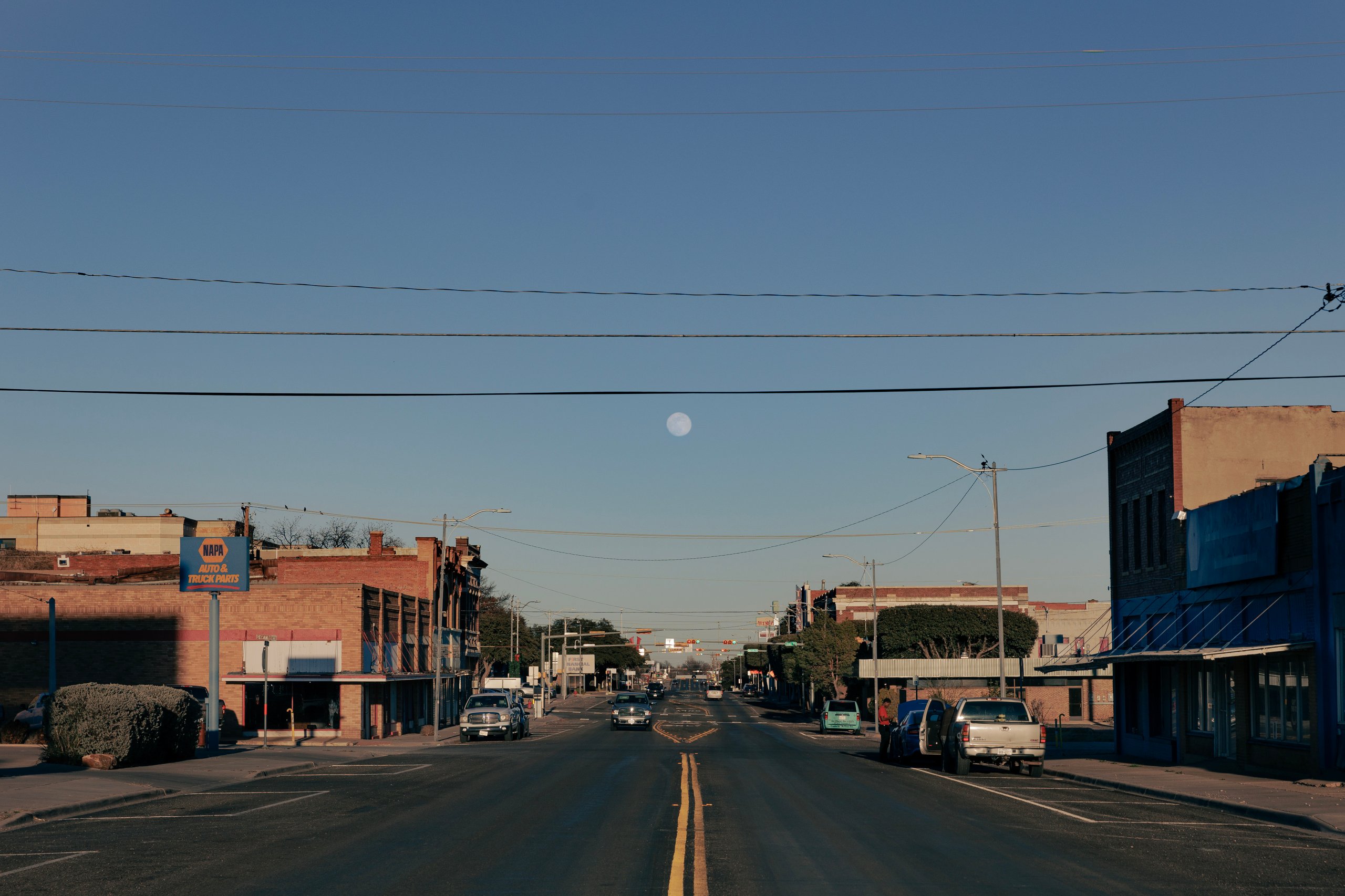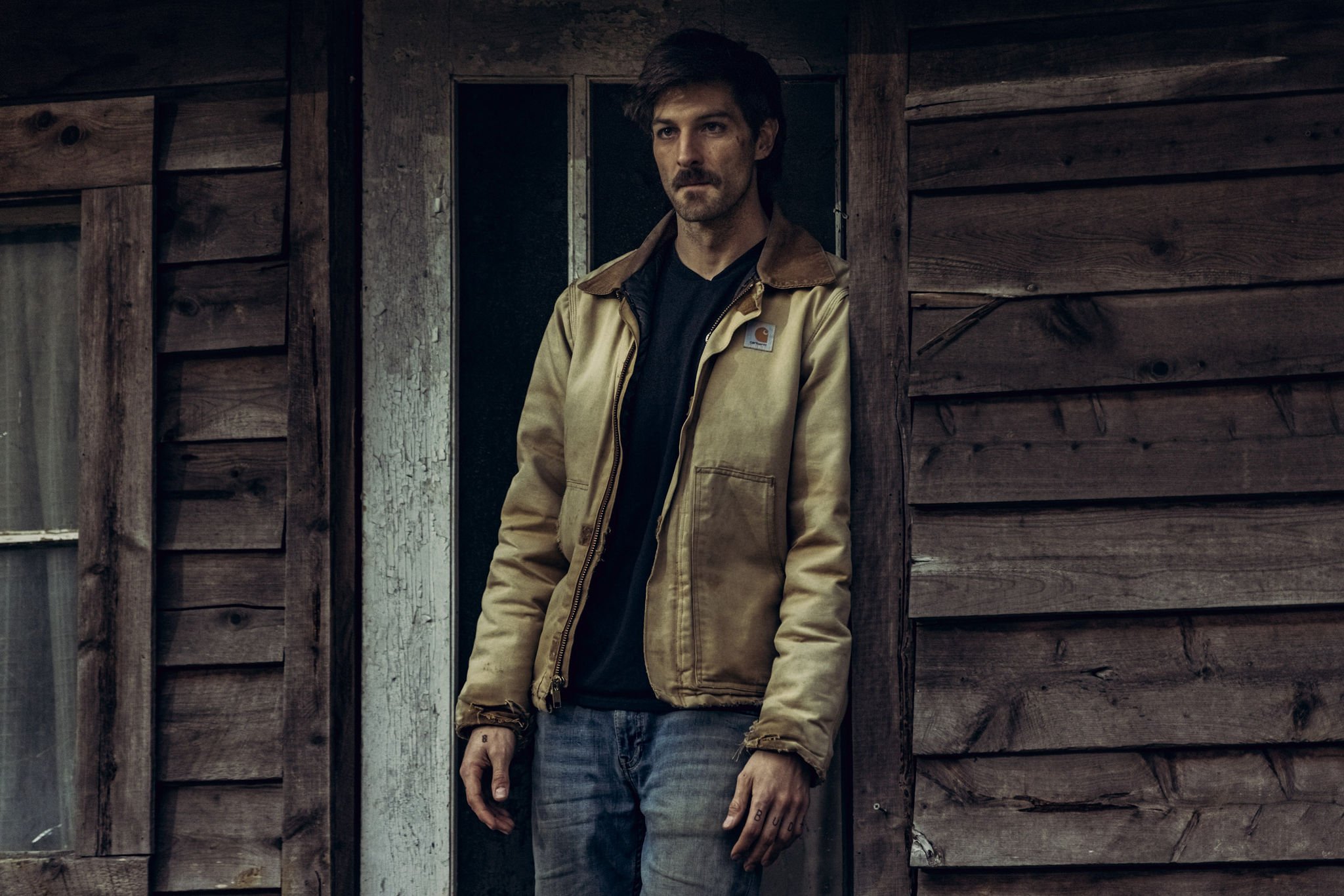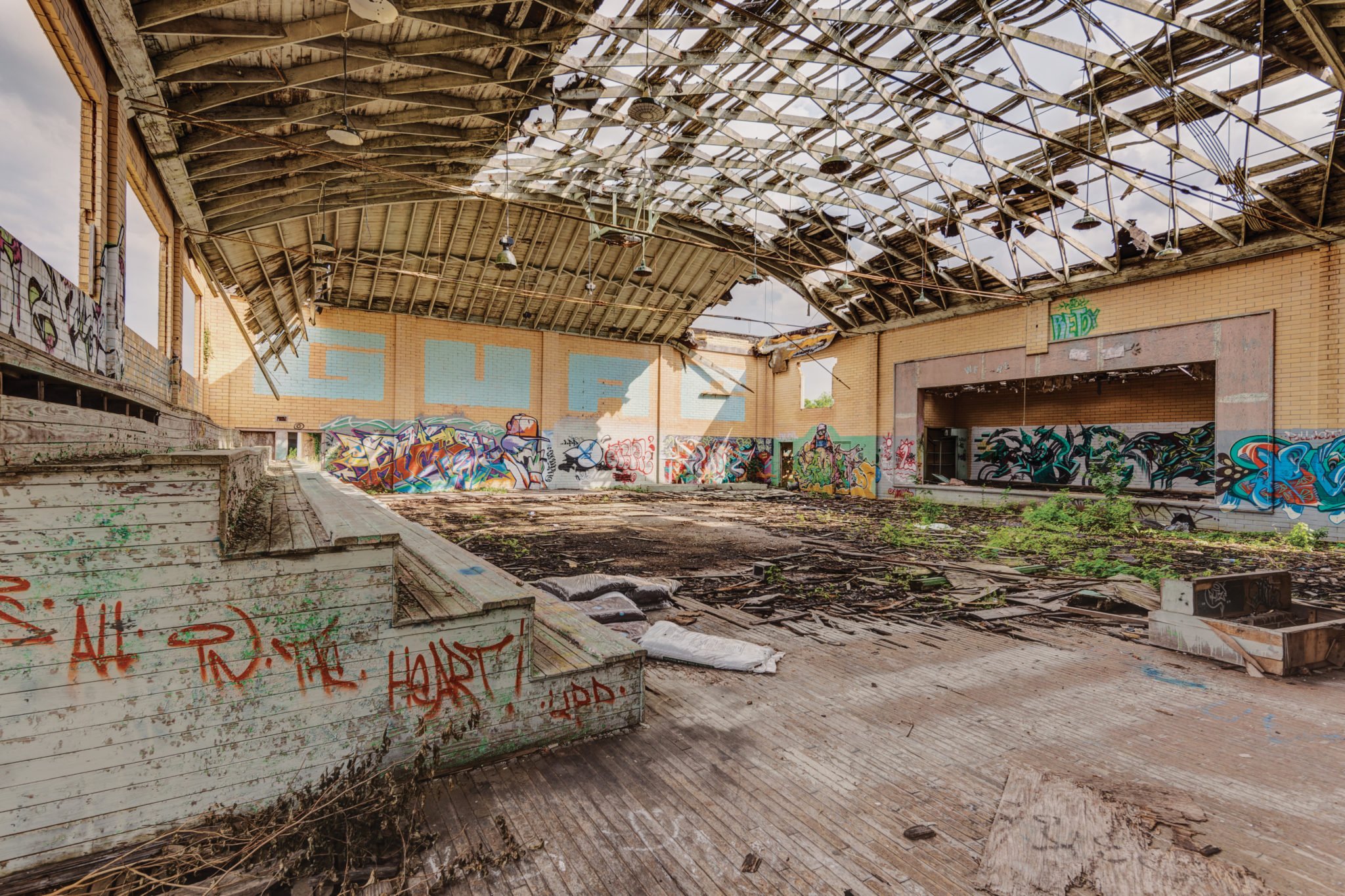
The Ghosts of Abandoned Texas Buildings Rise Up in an Eerie New Photo Book
"Lost, Texas" features starkly beautiful photos of once-thriving rural Texas towns.
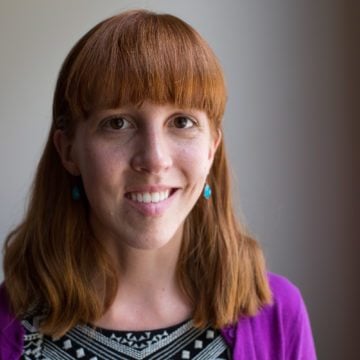
The Ghosts of Abandoned Texas Buildings Rise Up in an Eerie New Photo Book
“Lost, Texas” features starkly beautiful photos of once-thriving rural Texas towns.
–
by Rose Cahalan
@RoseCahalan
May 14, 2018
In 2009, driving home to Austin after a solo road trip to Big Bend Ranch State Park, Bronson Dorsey saw three abandoned buildings by the side of the highway near the tiny town of Langtry. He traveled the state often for his job managing construction projects, so he’d passed derelict and crumbling buildings many times before. At first he drove on, as he always had. But then a feeling Dorsey still can’t quite articulate spurred him to turn his pickup around. “It just planted a seed in my mind, I guess,” he says. Dorsey spent more than an hour wandering in and around the buildings with his camera, snapping pictures, and he’s barely stopped since. The result is a starkly beautiful new coffee-table book called Lost, Texas, filled with arresting photos of 93 forgotten buildings from across the state.
Also a trained architectural photographer, Dorsey has an eye for a building with good bones. Stately but crumbling structures like the red-brick Toyah High School and the Teague Hotel are endowed with a certain quiet dignity in these pages. You can catch glimpses of their former majesty beneath the ruined roofs, broken windows and encroaching weeds. The richly saturated photos are paired with brief accounts of the rural communities that once thrived here. The decline of the railroad industry in the 1950s and ’60s took with it entire swaths of rural Texas, as did industrialization, the replacement of small family farms with big agribusiness and the exodus to cities. Who knew that Palestine, a town of 18,000 east of Waco, once had “five weekly newspapers” and an opulent opera house?
Dorsey, who was born in Bay City in the 1940s and grew up across Texas as his family moved for his father’s work in the oil business, says he’ll always be a small-town guy: “Today you go to Dallas or Houston, and they’ve got lots of wonderful things to see, and they’re great producers of wealth and income, but as a city they’re all kind of the same.” The slow, prolonged emptying-out of rural Texas has been disheartening to watch over his lifetime, he says. “But I also see smaller towns that are trying to figure out a way to survive and attract people back. So I have hope.”
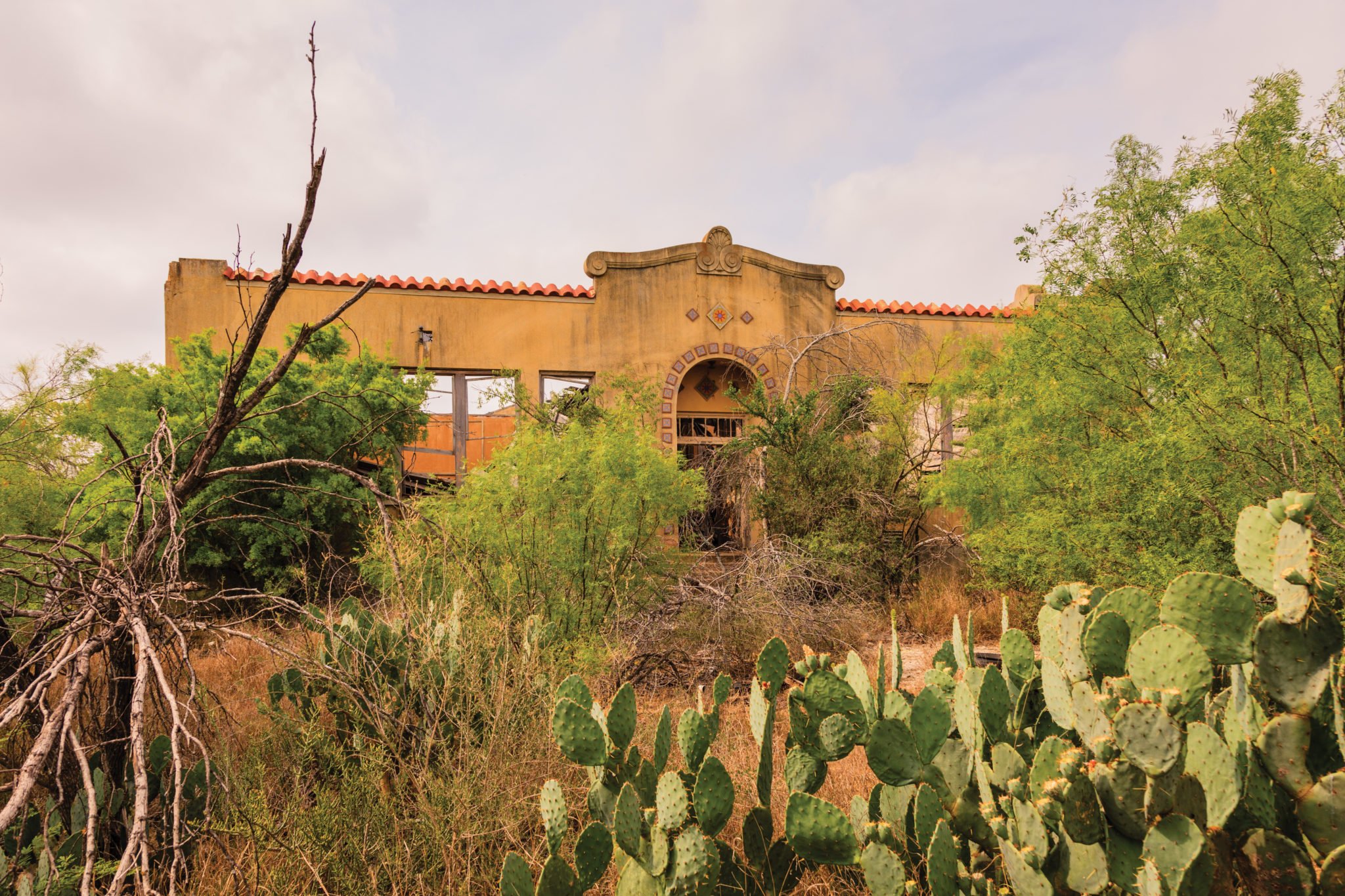
“For some of the more obscure places, all I had to go on was what I’d seen on Google streetview, and I didn’t know what I would find, or if a building would even still be standing. The Catarina School was one of those. There was a sense of excitement when I drove up and saw it. As you can see, it’s covered in cacti and thorny bushes, and I was careful to make sure I wouldn’t step on a rattlesnake.
The school was built in a Spanish eclectic style. You can tell it would’ve been really beautiful when it was new in the 1920s. The developers of Catarina wanted to lure people in to buy property, and I think that’s why you see such a colorful style on both the school and the hotel. I imagine there were many more beautiful buildings. And that marketing strategy was successful until the artesian wells dried up and the town disappeared.”
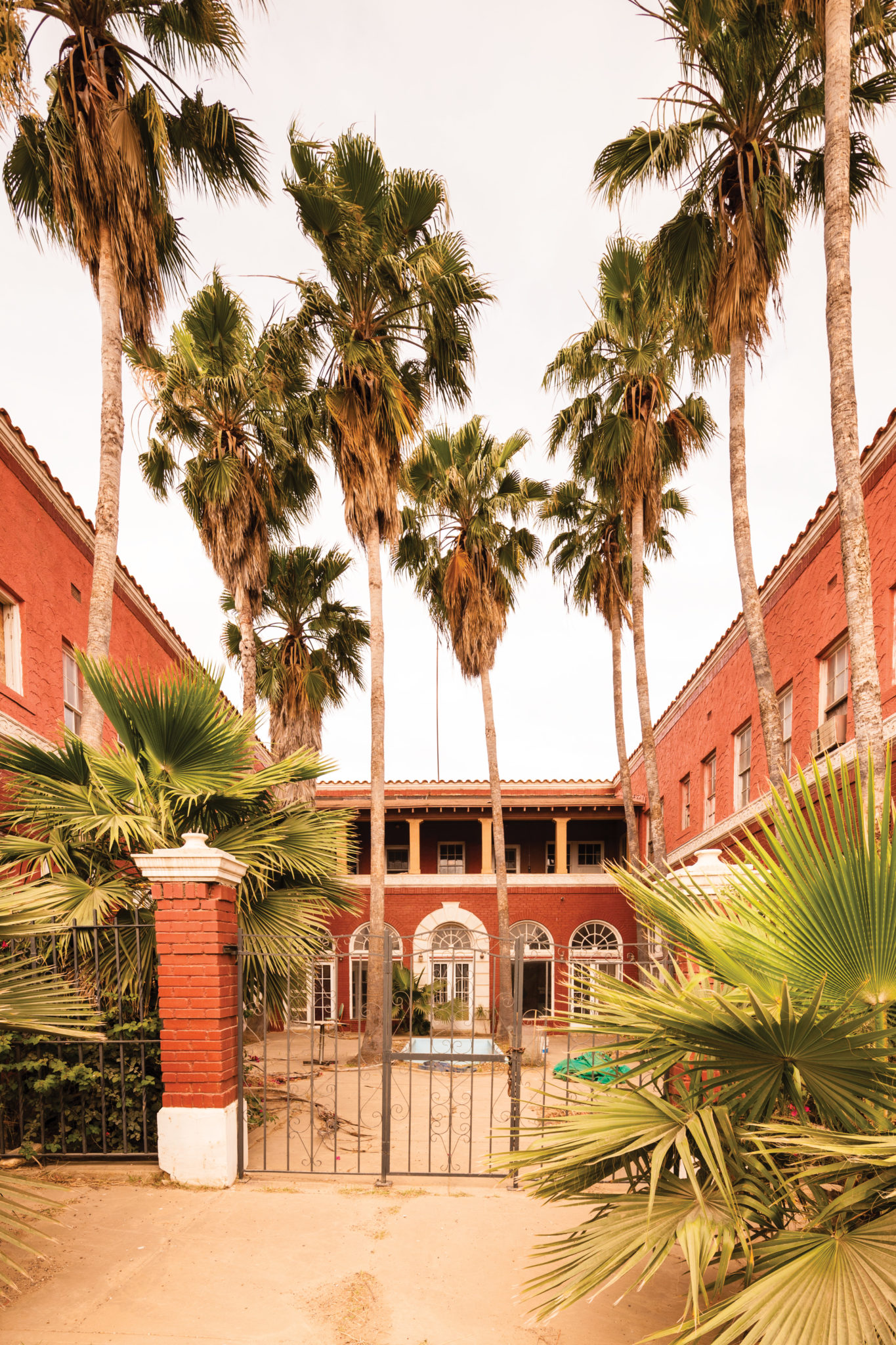
“Catarina started as a railroad shipping point for cattle, but then developers came and decided you could grow almost anything there as long as you had water. So the town was irrigated, and they built up orchards and brought potential buyers on the train from Chicago to wine and dine them. But then the water became brackish and ran out, and the whole town dried up, if you’ll excuse the pun.”

“This was an African American high school until the 1960s, partly funded by Julius Rosenwald — he was a philanthropist and former Sears, Roebuck and Company executive who helped build schools for African Americans all across the South. This photo was taken in the gymnasium.”
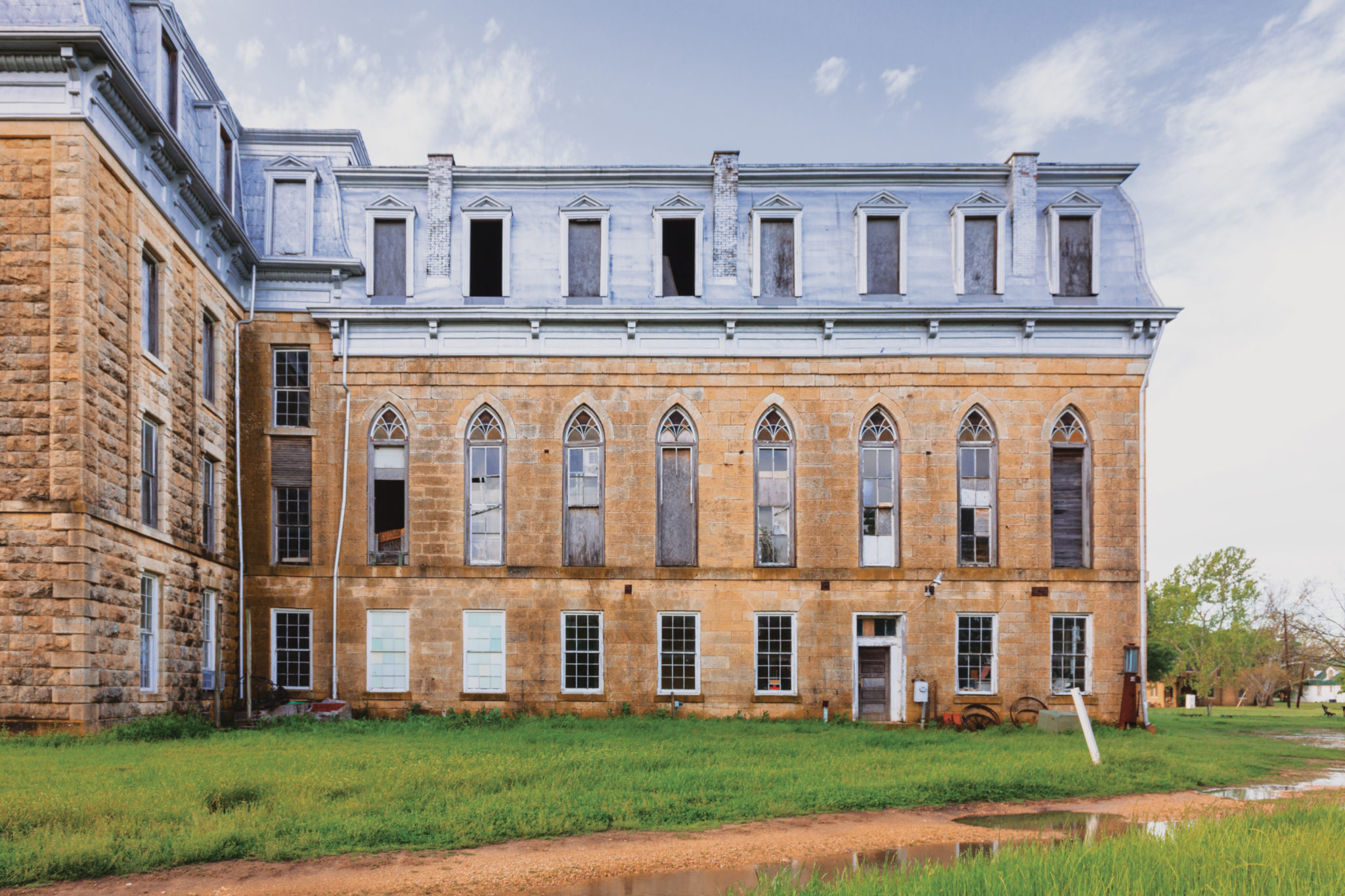
“I was attracted to this one just by its architectural design. It’s a striking combination of Gothic Revival architecture and the Second Empire style from Europe. Whatever you might think of as a Texas vernacular style of architecture is a mashup of styles that people brought when they migrated here. A lot of major buildings like a bank, courthouse or school — these were buildings that they wanted to make distinct. You can see that character of solidity and importance and presence.”
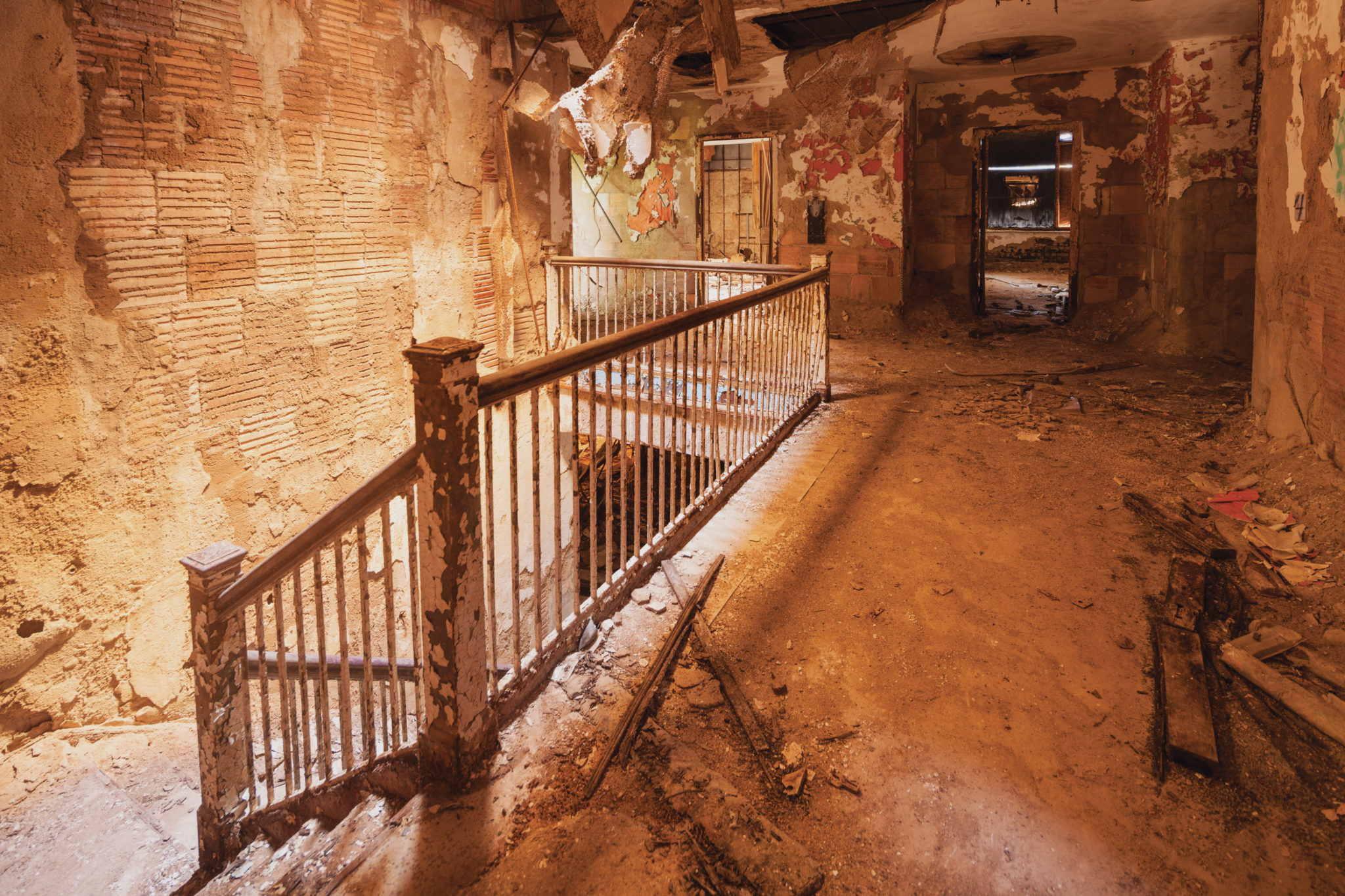
“I learned to be careful in these buildings. You never know when the floor’s going to cave in. I’d always carry a gallon jug of water, a flashlight, a knife, and a backpack with lenses and my camera. I did have an eerie sense in Marshall of — I don’t want to say ghosts, but you know innately that people occupied these buildings and used them.”
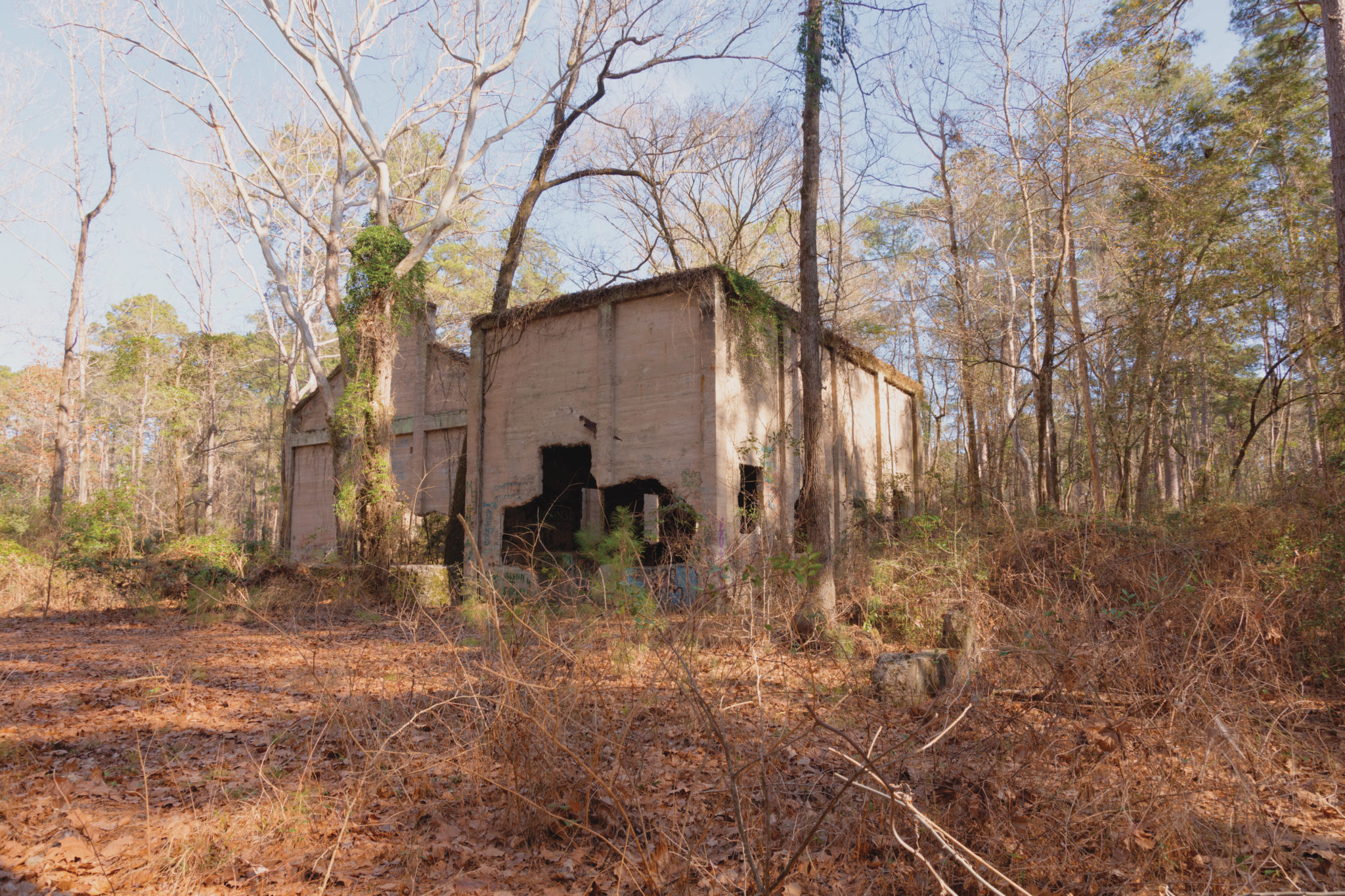
“Some of these sites were eerie, and some were sad. But there was also a sense of discovery. I had to make two trips before I found this sawmill in Aldridge. The first time was in the middle of July. It was so hot in the piney forest, and I only had a vague idea of where this thing was. I wandered and wandered. There was no cell service, and I ran out of water. Three or four months later, after getting in contact with somebody at the Forest Service, I got better directions, and I went back and found it.”
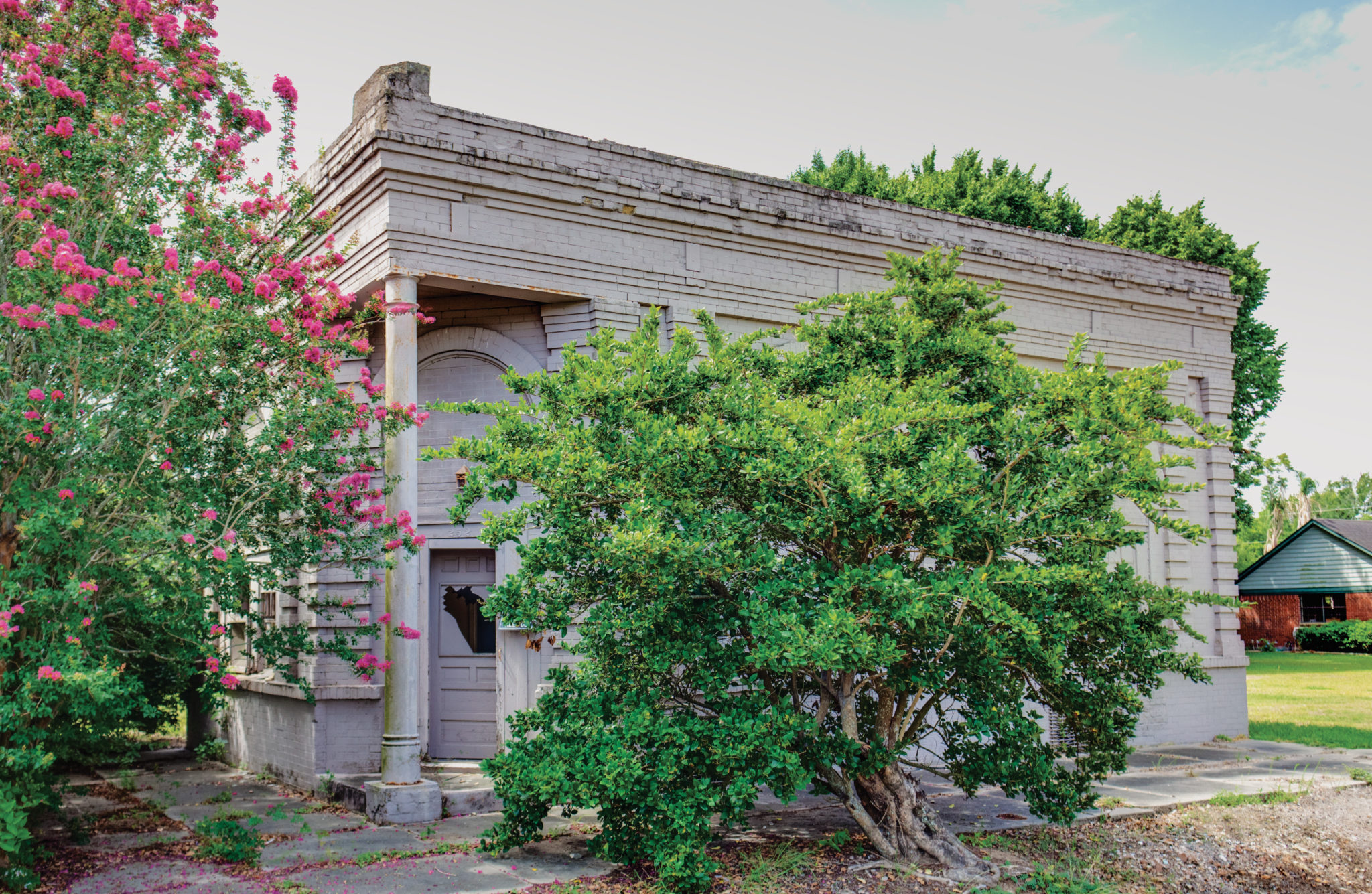
“This bank was brick and stone and unfortunately has been painted, which would make it harder to restore. In researching the little town of Blessing which is very close to Markham, there was an almost identical bank built there. And it has been restored.”
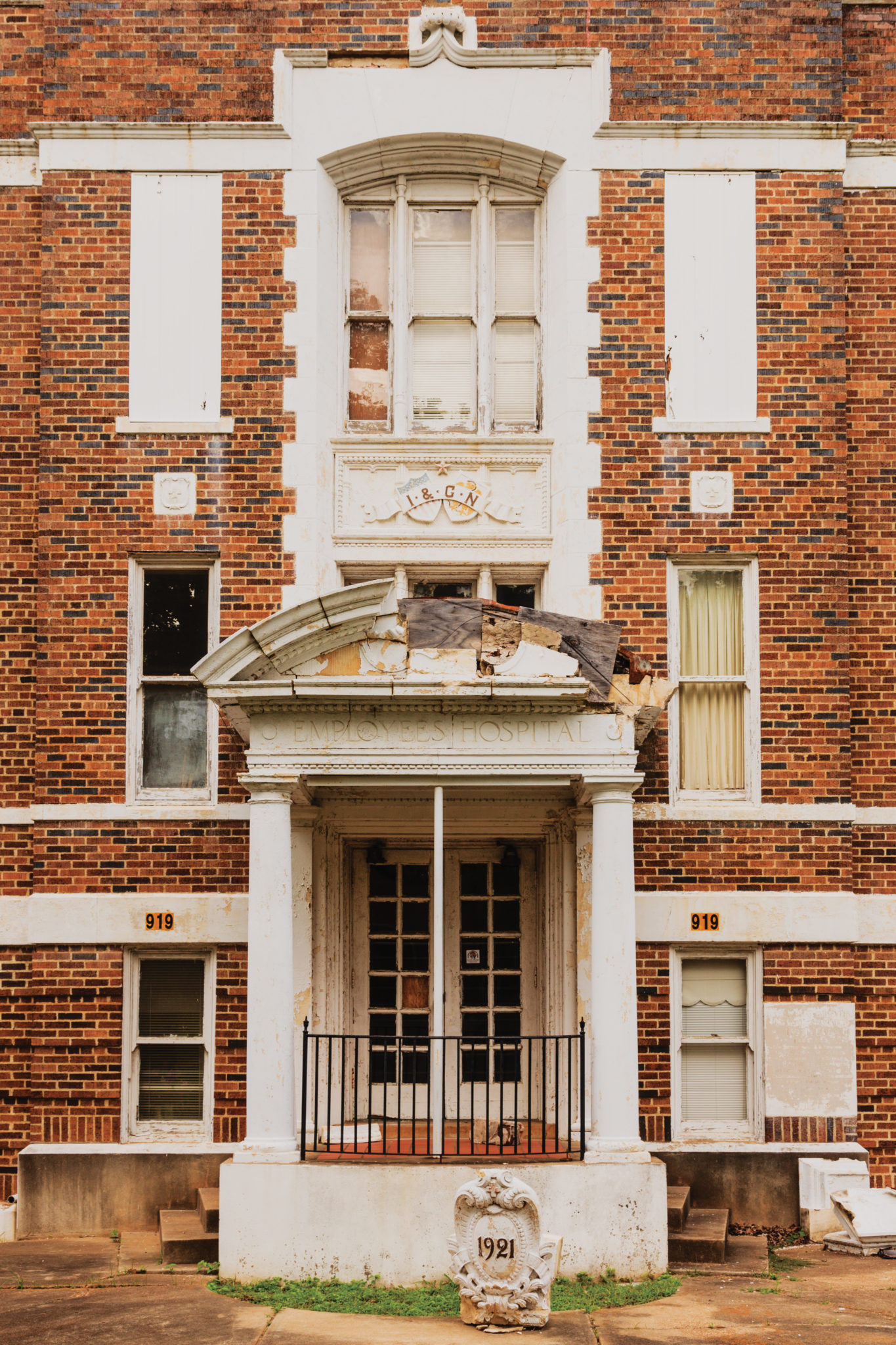
“Around the turn of the century, railroads became one of the first industries to provide health care to employees. When people were injured on the job far from a big city, which they often were, they had to be able to get them somewhere, and that’s why the railroad hospitals popped up.
When I was photographing this building, I heard a car pull up behind me. An elderly African-American woman was at the wheel. She told me a story that her brother had worked for the railroad and was taken to this hospital with an injury. They didn’t allow African Americans into the building, so he was operated on out on the back porch. ‘But they did save his life,’ she said.”
Top: Toyah High School, Toyah. “Toyah was founded before the railroad arrived in 1881, and this school was built in 1912. At one time or another in its history, Toyah had four churches, four stores, two banks, two hotels, two lumber yards and a drugstore. Sadly, most of the buildings were destroyed over the years by fire or tornados.”
All photos by Bronson Dorsey, courtesy Texas A&M University Press
